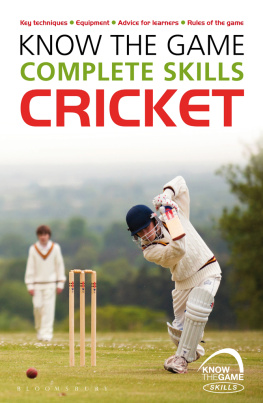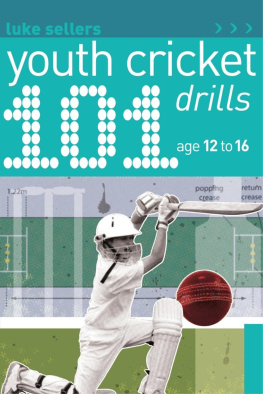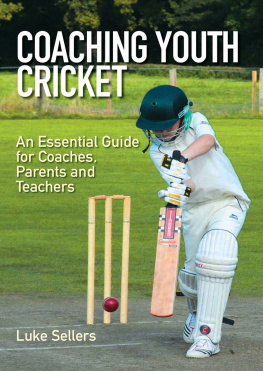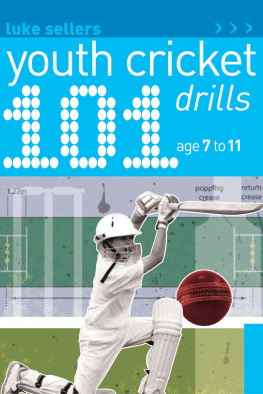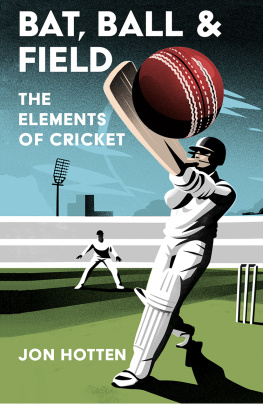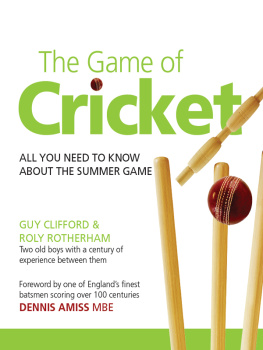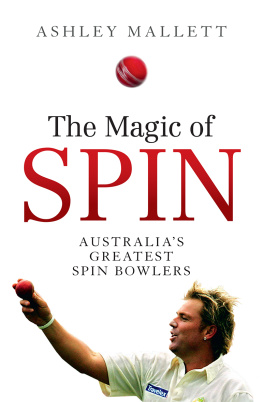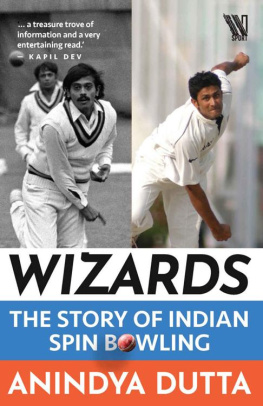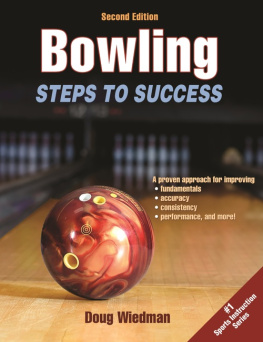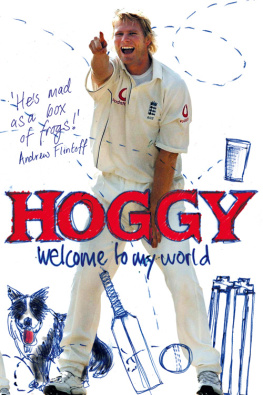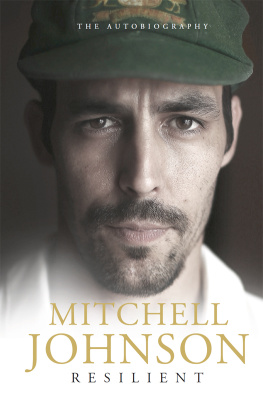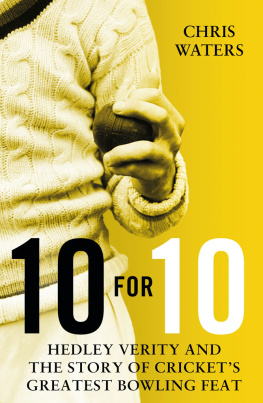
Bloomsbury Sport
An imprint of Bloomsbury Publishing Plc
| 50 Bedford Square | 1385 Broadway |
| London | New York |
| WC1B 3DP | NY 10018 |
| UK | USA |
www.bloomsbury.com
Bloomsbury is a trademark of Bloomsbury Publishing Plc
This electronic edition published in 2015 by Bloomsbury Publishing Plc
Westline Publishing, 2008, 2010, 2015
Westline Publishing have asserted their rights under the Copyright, Designs and Patents Act, 1988, to be identified as Author of this work.
All rights reserved
You may not copy, distribute, transmit, reproduce or otherwise make available this publication (or any part of it) in any form, or by any means (including without limitation electronic, digital, optical, mechanical, photocopying, printing, recording or otherwise), without the prior written permission of the publisher. Any person who does any unauthorised act in relation to this publication may be liable to criminal prosecution and civil claims for damages.
No responsibility for loss caused to any individual or organisation acting on or refraining from action as a result of the material in this publication can be accepted by Bloomsbury or the author.
British Library Cataloguing-in-Publication Data
A catalogue record for this book is available from the British Library.
ISBN: PB: 978-1472-9-1958-8
ePub: 978-1472-9-1959-5
Published in 2008 as Know the Game Skills: Cricket: Batting , Know the Game Skills: Cricket: Bowling and Know the Game Skills: Cricket: Fielding
Photography: Empics Sport/PA Photos, Getty Images and Julia Barnes.
To find out more about our authors and books visit www.bloomsbury.com. Here you will find extracts, author interviews, details of forthcoming events and the option to sign up for our newsletters.
Contents
Profile of a batsman
Bats, pads, gloves, helmets
Practise your grip, stance and backlift
Rock solid defending
No way through: playing back foot defence
How and when to leave the ball
Dynamic drives to attack full-length bowling
How to play brilliant back foot drives
Learning to punish short and wide deliveries
Attacking the short ball
Its all in the timing
A weapon against spin bowling
Running well and improving your game with good communication and awareness
Profile of a bowler
Line, length and pre-match preparation
Side-on, front-on and mid-way actions
The run-up, the bound, the coil, the release and the follow-through
In swing and out swing
Variations
Off spin, leg spin and left-arm spin
The floater, the googly and other spin variations
Profile of a fielder and field placings
Getting ready to react
Top tips for fielding close to the wicket
How to take a safe high catch
Learn to throw with power and precision
Attacking the ball and stopping singles
Saving runs in the outfield
Moving into a throwing position at speed
Learn how to chase and return the ball as quickly as possible
A safe way for fielding in the deep
Profile of a wicketkeeper
How to keep to slow bowlers
Effective technique for keeping to fast bowlers
When using this book, concentrate on one coaching point at a time. Practise each point until you have mastered it before moving on to the next one.
You do not need to work through the book from cover to cover. Choose a shot you want to work on and practise it until you are happy with the outcome.
About the author

Luke Sellers is an ECB-qualified coach.
He was formerly the community cricket coach for Gloucestershire, working with young players of all abilities and in coach education.
PART ONE : BATTING
To win any game of cricket a team must score more runs than the opposition. Thats the simple part. How you score runs, what shot you play and the way you play is all down to the individual. In international cricket there are many types of batsmen, from attacking players such as Englands Kevin Pietersen to defensive ones such as Indias Raul Dravid. Pietersen takes on bowlers from the start of his innings, while Dravid is known as the wall because bowlers find it almost impossible to get past his defence .
This book will help you to improve your attacking shots and defence and give you top tips for facing fast bowlers or spinners. It will help you to develop a sound technique, which is essential for all top batsmen. However, every individual is different and not everyone bats in the same way. If you play your shots differently to the way described in this book and are still successful then you shouldnt change the way you bat .
WHAT MAKES A GOOD BATSMAN?
Concentration
Confidence
Good shot selection
Quick reactions and foot movement
Ability to read the game and adapt accordingly
Patience
Courage
PROFILE OF A BATSMAN
The best batsmen in the world have the ability to bat in different ways depending on the situation of the game. A good batsman must be able to change the way he plays depending on what his team needs him to do, the bowlers he is facing and the pitch conditions. The number a batsman bats may also affect the way he plays.
Opening batsmen must have great courage and quick reactions to face fast bowlers with a new ball. They may be forced to play quite defensively to help the team through the difficult early stages of a match. Often the most gifted players, with the greatest array of attacking shots, bat at number 3 or 4. Batsmen at numbers 5 and 6 will have to be comfortable against both spinners and fast bowlers, and may need to be able to score runs quickly, particularly in a one-day match. Whatever their position, all batsmen need to keep concentrating over long periods of time to ensure they dont give their wicket away. Remember, it only takes one ball to get you out!
DID YOU KNOW?
The highest run scorer of all time in Test cricket is West Indian Brian Lara. He made 11,953 Test runs before retiring in 2007 .

Mahendra Singh Dhoni, Indias wicketkeeper-batsman, is one of the worlds most exciting attacking players.
EQUIPMENT
Choosing the right equipment can be a difficult task, with so many different brands to fit a variety of budgets. Here are a few handy hints to help you choose equipment that will be comfortable and fit well .
BATS
The bat is the main tool of your trade, so choosing the right one is really important. Cricket bats are made from willow, and the quality of the bat will depend on the quality of wood used, which is reflected in the price.
The most important things to consider when buying a bat are the correct size and weight. Some parents buy children bats to grow into. However, this may prevent a player developing good technique. A reasonable way to find the right bat size is to stand up straight with a bat by your side. The handle of the bat should reach the top of your thigh.
The most common mistake people make when buying a bat is to buy one that is too heavy. A good way to test if a bat is light enough is to pick the bat up using your top hand only. If you are able to take a good backswing and demonstrate both straight and cross batted shots with just one hand then the bat is right for you.

